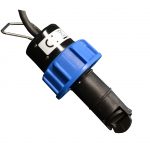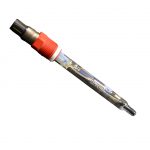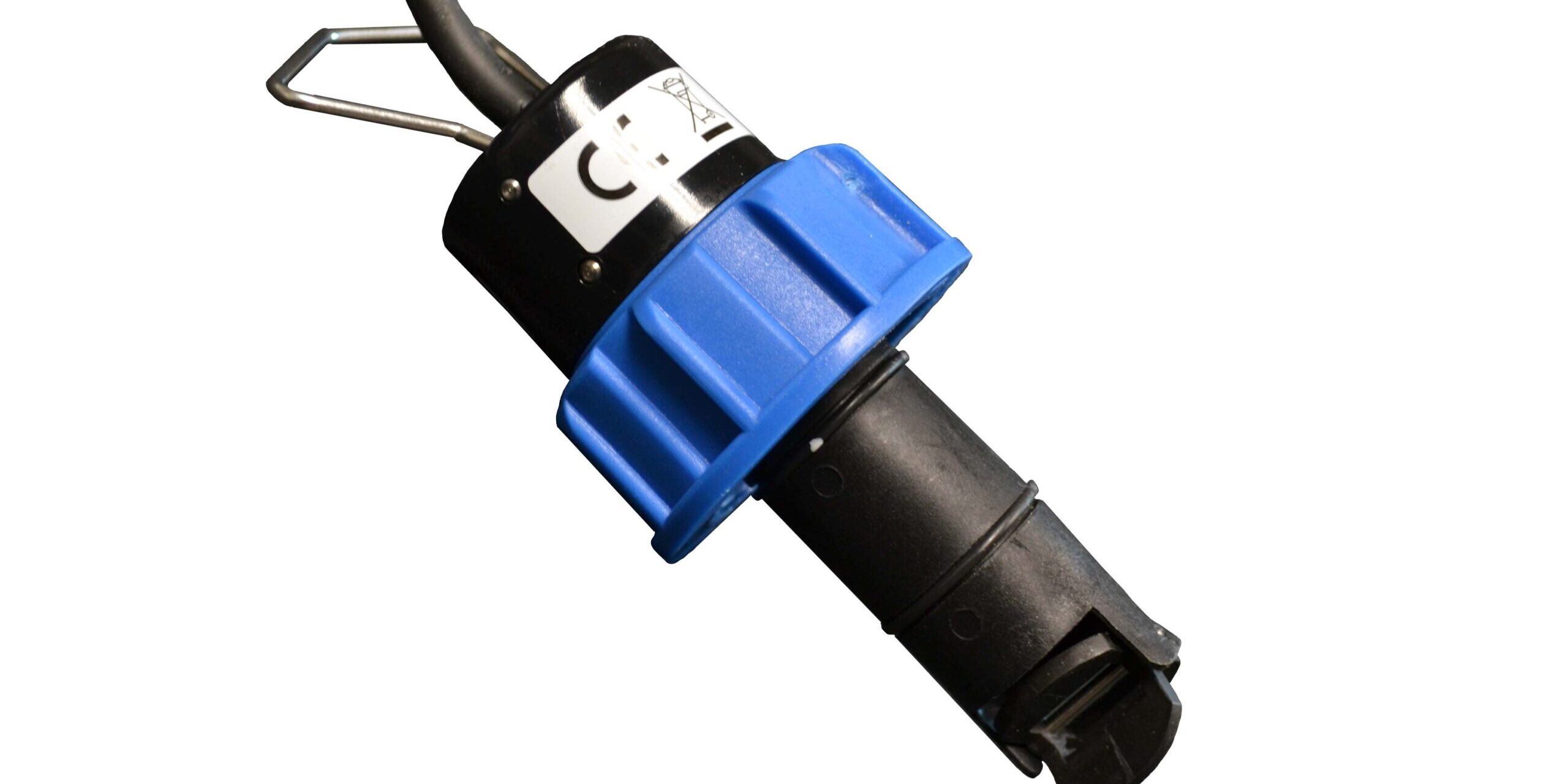By David Ferguson, Electrical Engineer | Pureflow, Inc.
Instrumentation is a vital component of high purity water systems. Of equal importance is selecting the right instrument for the task at hand and keeping it maintained. This article will discuss some of the most common instruments installed on a water system and present basic application and maintenance guidelines.
Pressure
Pressure transmitters are commonly installed to monitor system performance and to provide a means of protection for equipment and personnel. Typically, these transmitters monitor a single point of pressure but can also be used to monitor the differential pressure across a filter or other equipment in the water system. Tank level can also be derived from pressure by converting the pressure measurement into height of water column using the relationship 1 psi = 27.7 inH2O. Very little maintenance is required to keep pressure transmitters in working order. High purity applications require little or no cleaning, and only periodic calibrations are typically needed.
One important application of pressure transmitters is on a Reverse Osmosis (RO) unit. Pressure transmitters are typically installed on the RO feed supply, pump discharge, final concentrate, and permeate piping. Interstage pressure is sometimes added so that various differential pressures can be calculated.
Flow
Flow measurement is also vital to proper system operation. When flow is out of range on a piece of equipment, an alarm or warning from the control system can signal an operator to check the system for signs of failure. Conservation is a valuable theme when operating a water system, and flow measurement allows for totalization of water throughout. Tracking water usage, discharge, and/or demand can result in improved efficiencies. For example, regenerating a water softener based on throughput instead of a strict time-based schedule can lead to less frequent regeneration cycles, resulting in reduced water and salt usage. For continuous operation at peak performance, flow instruments with moving parts, such as paddle wheel or turbine elements, require regularly scheduled service to replace the worn components; otherwise, a periodic calibration is the only maintenance required.
pH
Another characteristic of water that is frequently monitored, if not controlled, is pH. This parameter is not always as physically obvious as pressure or flow, but it can be critical to system performance. The pH value is the negative logarithm of the concentration of Hydrogen ions in aqueous solutions. The measurement is made by an ion-specific glass probe where the difference in concentration of hydrogen ions between the electrolyte and solution under test results in a small voltage. The pH analyzer converts this voltage measurement into a pH value.
These sensors have no moving parts yet require frequent attention. They require calibration at the time of installation and regular calibrations thereafter. The calibration interval is dependent on the process, but a six-month interval is a good rule of thumb to start. Once the sensor will no longer hold calibration, it must be replaced.
Conductivity
One of the most frequent indicators of system performance and water quality is conductivity or resistivity. Conductivity measures the ability of a solution to conduct electric current which is an indicator of the ionic content of the solution. Conductivity and resistivity are reciprocals of each other with units of µS/cm (micro-Siemens per centimeter) and MOhm•cm (mega-Ohm centimeter), respectively. In conversation, these are shortened and discussed as just µS or MOhm. A single sensor will provide either measurement.
Ionic activity is temperature dependent which results in temperature dependent conductivity. In order to provide a uniform reference point, conductivity analyzers provide a temperature compensated value to 25 ⁰C. In this manner, conductivity comparisons can be made without regard to temperature.
Conductivity sensors have no moving parts and require little to no maintenance when used in high purity applications. If they are used in dirty waters, periodic cleaning is required. The primary requirement for maintaining a conductivity sensor is annual verification.
Temperature
Conductivity sensors calculate temperature through use of an integrated RTD or resistance temperature device. RTD’s have a predetermined relationship between resistance and temperature. The conductivity analyzer monitors this resistance to calculate the temperature of the solution and applies the necessary compensation to the conductivity value. The temperature value should be verified annually along with the conductivity verification to ensure the RTD is performing to specification.
In addition to being integrated into conductivity sensors for temperature measurement, RTD’s are available as standalone sensors when temperature must be monitored alone. For example, to control temperature in a process by use of a heat exchanger, an RTD is installed to provide the control system the ability to monitor the performance of and to control the heat exchanger. As in the case of the conductivity sensor, the RTD should be verified annually and calibrated if needed.
Amperometric
One final type of sensor for discussion is that of the amperometric or electrochemical type. Two parameters commonly monitored by this type of sensor are chlorine and ozone. In an amperometric sensor, the electrodes (anode and cathode) are covered by a semipermeable membrane. The body of the sensor contains an electrolyte. The membrane and electrolyte are designed to respond to the substance under test. These sensors monitor the current flow between the electrodes in the sensor, and the analyzer converts this current (usually on the order of nanoamps) into a quantity of the desired parameter.
The current between the sensor electrodes is altered by the amount of substance that permeates the membrane. As more chlorine, for example, permeates the membrane of the chlorine sensor, reactions in the electrolyte solution allow more current flow between the electrodes. This results in a higher chlorine value at the analyzer.
Amperometric sensors require routine maintenance to perform as designed. Maintenance tasks include replacing the membrane and electrolyte solution at regular intervals. The maintenance interval depends on the sensor design and the concentration of the measured substance, and the schedule is best determined after installation. This provides time to observe sensor performance so that routine maintenance schedules can be established. After maintenance is performed, a calibration is required.
Amperometric sensors typically require two points of reference when performing a calibration. The zero point is first set by exposing the sensor to a sample without any trace of the parameter under test. The span point is set by exposing the sensor to a sample that does contain the desired parameter. In addition, the concentration of the desired substance should be greater than the nominal concentration. For example, if ozone is typically around 100 ppb, the span calibration should be performed at 200 ppb.
Lastly, the first of two final comments on amperometric sensors is that they should be used to monitor the presence of a substance rather than the absence of the substance whenever possible. In some cases, such as when verifying ozone destruction after a UV, this application is unavoidable; however, when verifying chlorine removal prior to an RO, for example, an electrochemical sensor is not the best choice. An analyzer based on the colorimetric technique would be better suited for this application. The second comment on amperometric sensors is that when performing maintenance and calibration, ample time must be allowed for proper sensor stabilization. Once new electrolyte has been added to the sensor, it undergoes a period of polarization, and this must be complete before attempting the zero calibration. Then within each calibration step, the sensor again needs to stabilize in the sample solution prior to executing the calibration.
Conclusion
As demonstrated above through these select examples, instrumentation is available to monitor a wide variety of parameters. Online instruments provide valuable real- time data to a system operator and can also provide data to a control system for automated response to changing conditions. Additionally, these data can be recorded by a system historian for long term archival, providing the ability to generate system trends for review and analysis. Historical data are invaluable in troubleshooting and failure analysis situations, and this further emphasizes the value and importance of online instruments.
Click here to download the PDF of this TechNote!
David Ferguson is an Electrical Engineer at Pureflow, Inc. and has been a member of the Pureflow team since 2006. David has over 15 years of programming and electrical engineering experience and over 9 years of instrumentation and control system design in the high purity water industry. He has his B.S. in Electrical Engineering from the University of Memphis, and his M.S. in Electrical Engineering from Duke University.
Article is re-printed with permission of David Ferguson. Unauthorized reproduction of this article and/or use in any form is strictly prohibited without the expressed written consent of Pureflow, Inc.

